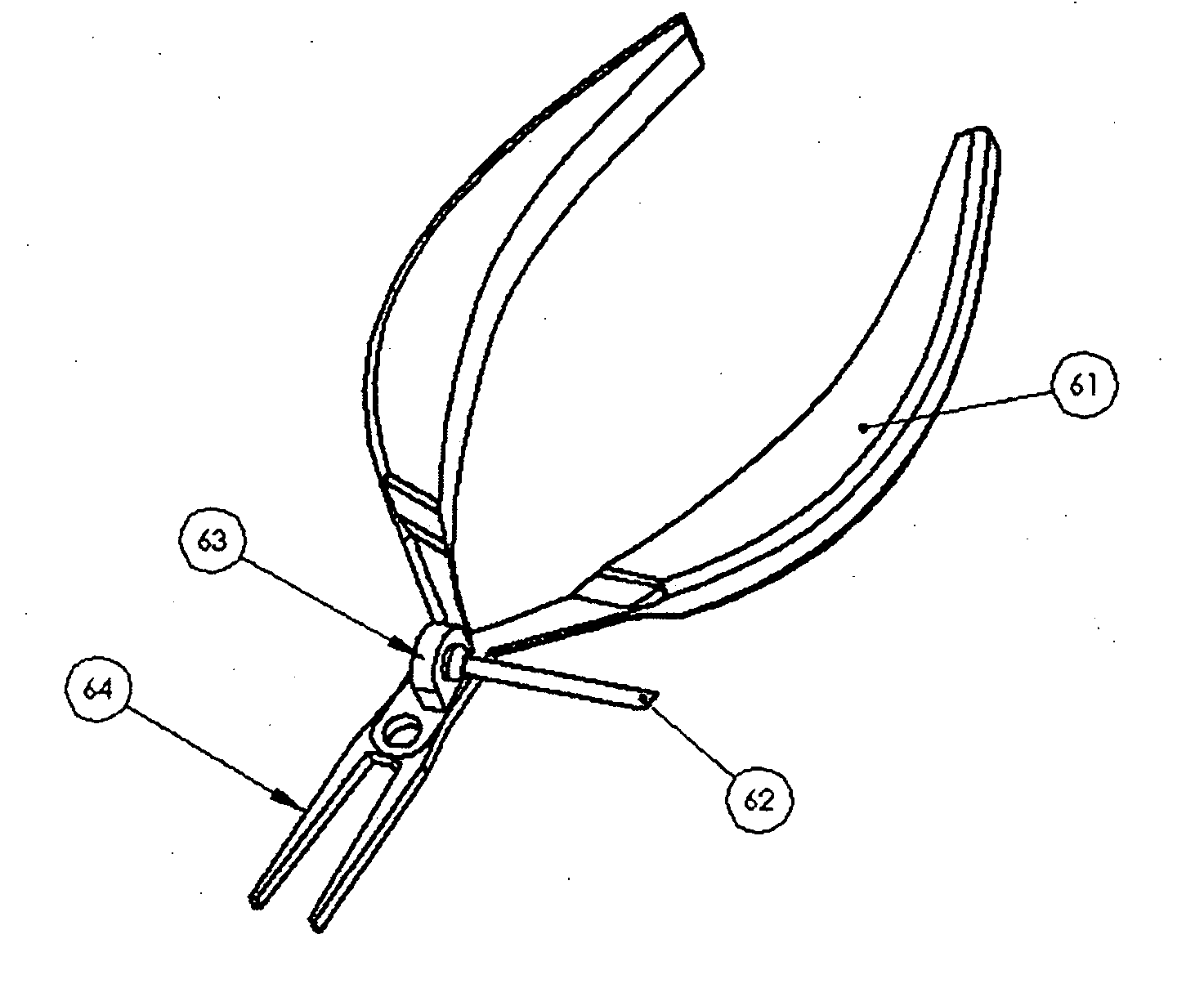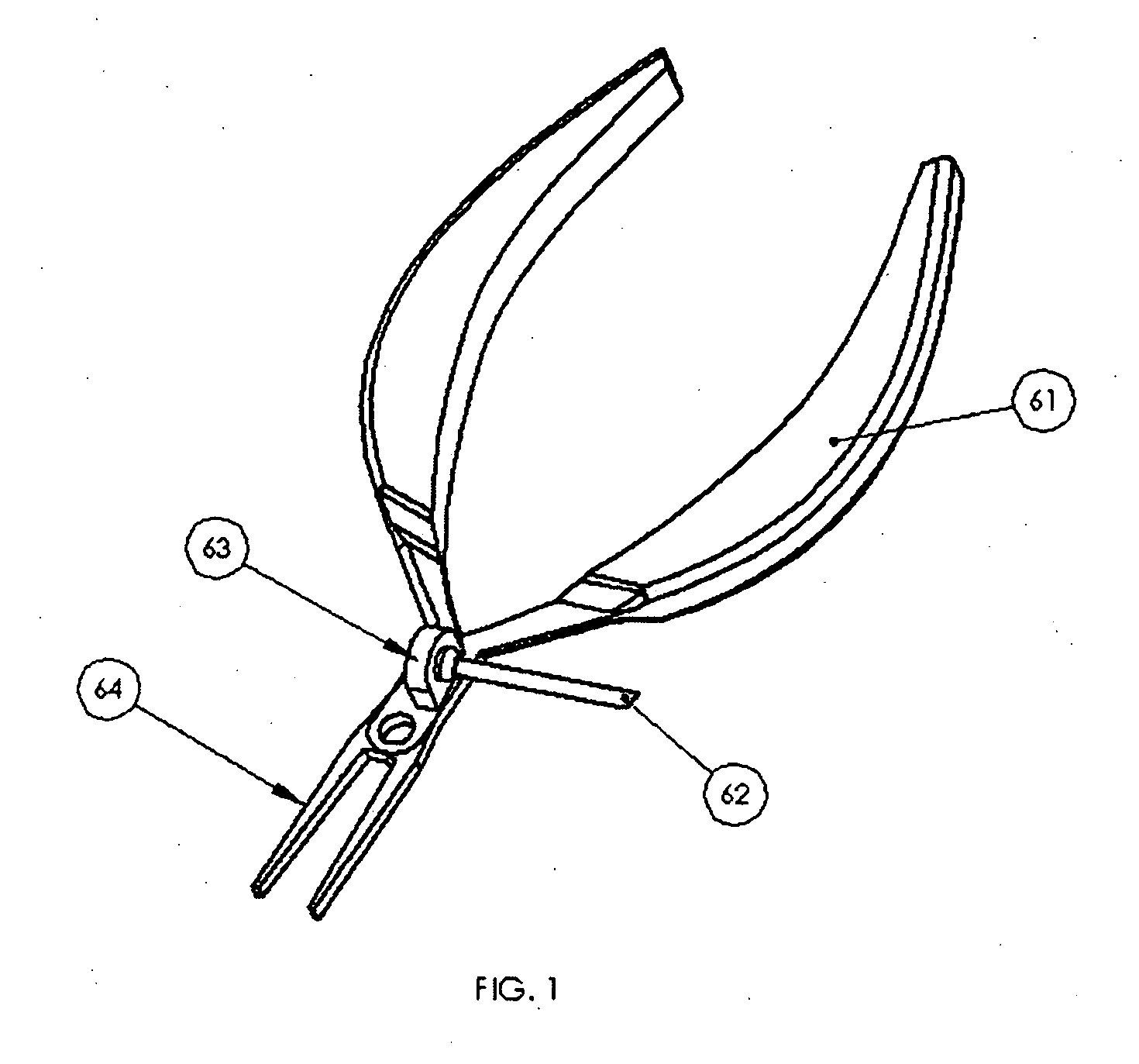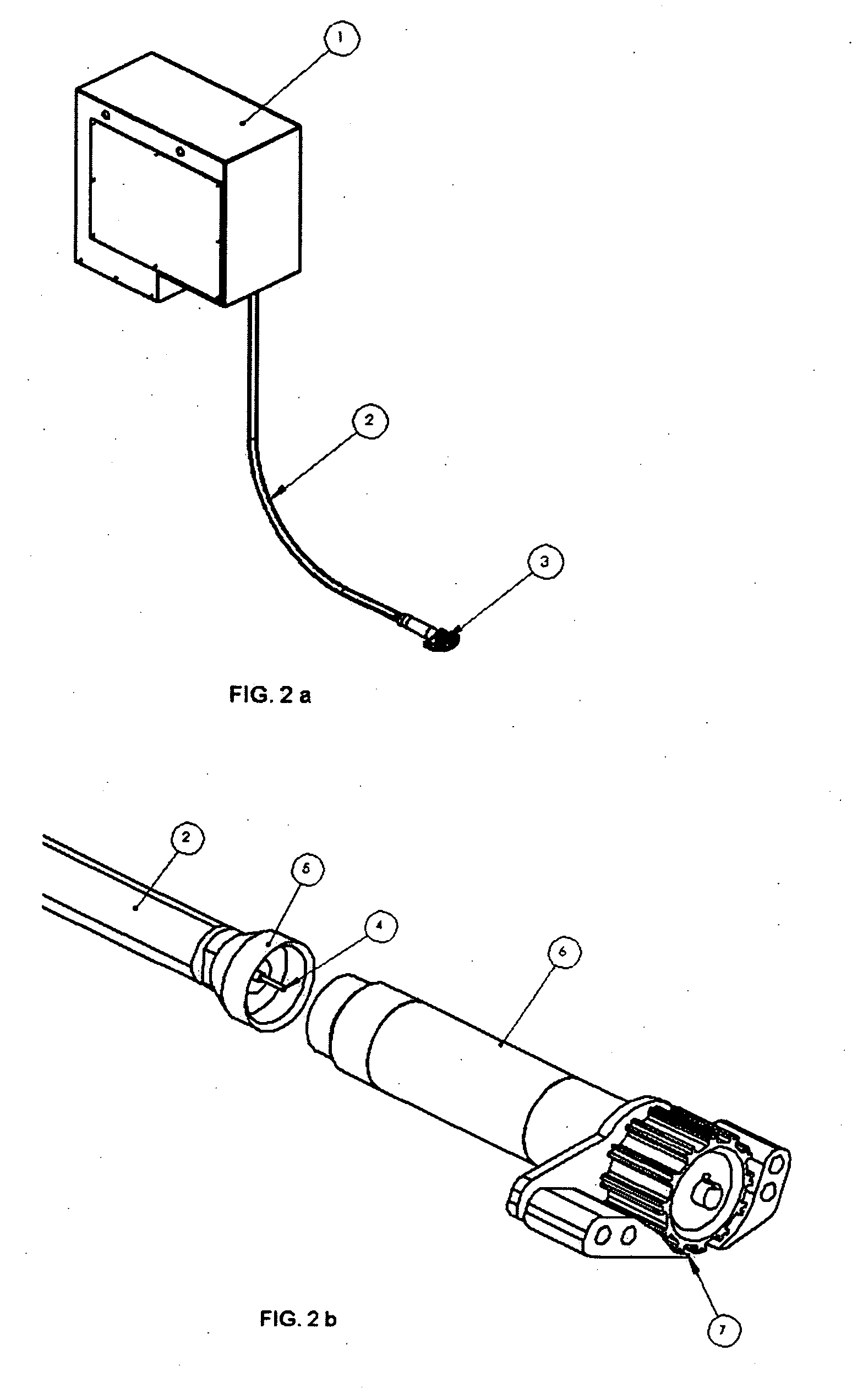Apparatus and procedure for fish boning
a technology of apparatus and fish, applied in the field of apparatus and a procedure for boning fish, can solve the problems of high rigidity level of meat, inadequate performance of available process technology, and technological deficiency
- Summary
- Abstract
- Description
- Claims
- Application Information
AI Technical Summary
Benefits of technology
Problems solved by technology
Method used
Image
Examples
Embodiment Construction
[0105]FIG. 1 shows the manual extraction apparatus using vibrations, in other words, the manual forceps with vibratory system 63, wherein reference number 64 corresponds to the capturing forceps, connected through the flexible shaft to the vibrations generator 63.
[0106] This embodiment of the invention comprises connecting a bone extracting forceps with a vibration generator 63. The objective is transmitting the vibrations to the bone, thus generating vibrations, causing detachment.
[0107] In this particular embodiment, the torque and vibrations generator comprises only the vibration generator, because the operator provides the torque with his wrist. The vibrations generator 63 comprises an eccentric shaft that rotates and moves its gravity center outside the rotation axis, thus generating vibrations in the forceps 64. As can be seen in FIG. 1, the vibrations generator 63 is located on the forceps and connected through a flexible shaft 62, to a power source generating a constant to...
PUM
 Login to View More
Login to View More Abstract
Description
Claims
Application Information
 Login to View More
Login to View More - R&D
- Intellectual Property
- Life Sciences
- Materials
- Tech Scout
- Unparalleled Data Quality
- Higher Quality Content
- 60% Fewer Hallucinations
Browse by: Latest US Patents, China's latest patents, Technical Efficacy Thesaurus, Application Domain, Technology Topic, Popular Technical Reports.
© 2025 PatSnap. All rights reserved.Legal|Privacy policy|Modern Slavery Act Transparency Statement|Sitemap|About US| Contact US: help@patsnap.com



